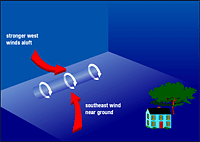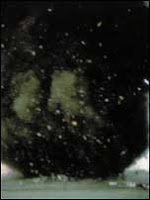Why should we not care about global warming and climate change? There is a rip tide of information from environmental sensationalists, to critics and ambivalent middlemen prevailing on this question. Scare mongers suggest global warming will end humanity and the world as we know it. Critics assert that there is some truth to climate change but argue with alarmists who believe the changes are apocalyptical. Conversely, environmentalists believe climate change occurs gradually and can lead to the decimation of the planet and its inhabitants if care or preventative measures are not undertaken. Some environmentalists claim that proof lies in yearly seasonal changes and the advent of natural disasters, which not only threaten humanity but are exacerbated by human indifference to the environment. For these environmentalists the connection between natural disasters and climate change substantiates the need to be concerned. With so many differing perspectives the middleman continues to be ambivalent wondering which argument is the truth.
One apparent truth is that no one seems to know the right answer but it is important to keep on searching for accurate facts. If we are confused, then we need more information to understand climate change and its possible influences. On this website visitors are encouraged to draw their own conclusions on the connection between climate change and natural disasters, and whether warnings are opportunistic or justifiable.
Distinctions between natural disasters and hazards, climate change and global warming.
Before your perusal, we’d like to share the distinctions between natural disasters and hazards, as well as climate change and global warming.
According to UNESCO, natural hazards are “naturally-occurring physical phenomena caused either by rapid or slow onset events having atmospheric, geologic and hydrologic origins on solar, global, regional, national and local scales. They include earthquakes, volcanic eruptions, landslides, tsunamis, floods and drought. Natural disasters are the consequences or effects of natural hazards. They represent a serious breakdown in sustainability and disruption of economic and social progress” (United Nations Educational, Scientific and Cultural Organization [UNESCO], n.d). “Climate change refers to any significant change in measures of climate (such as temperature, precipitation, or wind) lasting for an extended period (decades or longer). Global warming is an average increase in the temperature of the atmosphere near the Earth's surface and in the troposphere, which can contribute to changes in global climate patterns. Global warming and climate change can be caused by a variety of factors, both natural and human-induced” (U.S. Environmental Protection Agency [EPA], 2008). Global warming, climate change and natural disasters share the impacts of human interference or involvement as a commonality. If we remain uncertain about what affects the environment, we will not gain clarity on what affects the quality of our livelihood and that of generations to come. Thank you for visiting our site and we hope you find the information offered valuable and informative.
References
United Nations Educational, Scientific and Cultural Organization. (n.d). Natural disaster reduction. Retrieved August 3, 2008, from http://www.unesco.org/science/disaster/about_disaster.shtml.
U.S.Environmental Protection Agency. (2008). Climate Change. Retrieved August 3, 2008, from http://www.epa.gov/climatechange/fq/science.html.








